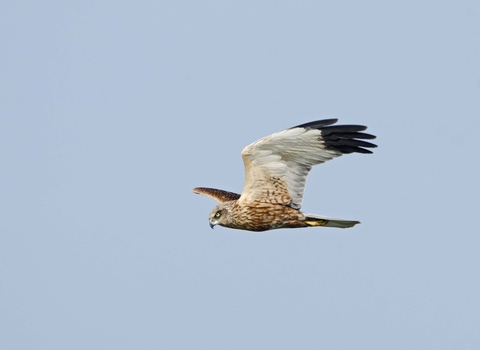
©David Tipling/2020VISION

©Andrew Parkinson/2020VISION
Marsh harrier
The courtship of the marsh harrier is certainly a sight to behold - wheeling and tumbling through the sky, male and female partners lock talons in mid-air. Look out for this rare bird over reedbeds in East Anglia, Somerset and the South East.
Scientific name
Circus aeruginosusWhen to see
January to DecemberSpecies information
Category
Statistics
Length: 48-55cmWingspan: 1.2m
Weight: 540-670g
Average lifespan: 6 years
Classified in the UK as Amber under the Birds of Conservation Concern 5: the Red List for Birds (2021). Protected in the UK under the Wildlife and Countryside Act, 1981.
